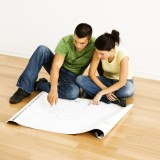Read this ebook for free! No credit card needed, absolutely nothing to pay.
Words: 28637 in 6 pages
This is an ebook sharing website. You can read the uploaded ebooks for free here. No credit cards needed, nothing to pay. If you want to own a digital copy of the ebook, or want to read offline with your favorite ebook-reader, then you can choose to buy and download the ebook.


: Irvin Cobb His Book: Friendly Tributes upon the Occasion of a Dinner Tendered to Irvin Shrewsbury Cobb at the Waldorf-Astoria Hotel New York April Twenty-Fifth MCMXV by Various - Authors American 20th century Biography; Cobb Irvin S. (Irvin Shrewsbury) 18
Introduction 1
Calorimeter laboratory 3 General plan of calorimeter laboratory 3 Heating and ventilating 7
The calorimeter 10 Fundamental principles of the apparatus 10 The calorimeter chamber 11 General construction 14 Prevention of radiation 17 The thermo-electric elements 19 Interior of the calorimeter 20 Heat-absorbing circuit 22 Thermometers 26 Mercurial thermometers 26 Electric-resistance thermometers 28 Air-thermometers 28 Wall thermometers 29 Electrical rectal thermometer 29 Electric-resistance thermometers for the water-current 29 Observer's table 31 Connections to thermal-junction systems 33 Rheostat for heating 34 Wheatstone bridges 34 Galvanometer 35 Resistance for heating coils 35 Temperature recorder 36 Fundamental principle of the apparatus 38 The galvanometer 39 The creeper 40 The clock 42 Installation of the apparatus 42 Temperature control of the ingoing air 43 The heat of vaporization of water 44 The bed calorimeter 45 Measurements of body-temperature 48 Control experiments with the calorimeter 50 Determination of the hydrothermal equivalent of the calorimeter 52
General description of the respiration apparatus 54 Testing the chamber for tightness 54 Ventilation of the chamber 54 Openings in the chamber 55 Ventilating air-current 57 Blower 57 Absorbers for water-vapor 58 Potash-lime cans 60 Balance for weighing absorbers 61 Purification of the air-current with sodium bicarbonate 63 Valves 63 Couplings 64 Absorber table 65 Oxygen supply 67 Automatic control of oxygen supply 69 Tension equalizer 71 Barometer 72 Analysis of residual air 73 Gas-meter 75 Calculation of results 76 Analysis of oxygen 76 Advantage of a constant-temperature room and temperature control 77 Variations in the apparent volume of air 77 Changes in volume due to the absorption of water and carbon dioxide 78 Respiratory loss 78 Calculation of the volume of air residual in the chamber 79 Residual analyses 80 Calculation from residual analyses 80 Influence of fluctuations in temperature and pressure on the apparent volume of air in the system 83 Influence of fluctuations in the amounts of carbon dioxide and water-vapor upon residual oxygen 83 Control of residual analyses 84 Nitrogen admitted with the oxygen 84 Rejection of air 85 Interchange of air in the food aperture 85 Use of the residual blank in the calculations 86 Abbreviated method of computation of oxygen admitted to the chamber for use during short experiments 88 Criticism of the method of calculating the volume of oxygen 89 Calculation of total output of carbon dioxide and water-vapor and oxygen absorption 91 Control experiments with burning alcohol 91 Balance for weighing subject 93 Pulse rate and respiration rate 95 Routine of an experiment with man 96 Preparation of subject 96 Sealing in the cover 97 Routine at observer's table 97 Manipulation of the water-meter 98 Absorber table 99 Supplemental apparatus 100
PAGE
Fig. 1. General plan of respiration calorimeter laboratory 4
RESPIRATION CALORIMETERS FOR STUDYING THE RESPIRATORY EXCHANGE AND ENERGY TRANSFORMATIONS IN MAN.
INTRODUCTION.
The establishment in Boston of an inquiry into the nutrition of man with the construction of a special laboratory for that purpose is a direct outcome of a series of investigations originally undertaken in the chemical laboratory of Wesleyan University, in Middletown, Connecticut, by the late Prof. W. O. Atwater. Appreciating the remarkable results of Pettenkofer and Voit and their associates, as early as 1892 he made plans for the construction of a respiration apparatus accompanied by calorimetric features. The apparatus was designed on the general ventilation plan of the above investigators, but in the first description of this apparatus it is seen that the method used for the determination of carbon dioxide and water-vapor was quite other than that used by Voit. Each succeeding year of active experimenting brought about new developments until, in 1902, the apparatus was essentially modified by changing it from the open-circuit type to the closed-circuit type of Regnault and Reiset. This apparatus, thus modified, has been completely described in a former publication. The calorimetric features likewise underwent gradual changes and, as greater accuracy was desired, it was found impracticable to conduct calorimetric investigations to the best advantage in the basement of a chemical laboratory. With four sciences crowded into one building it was practically impossible to devote more space to these researches. Furthermore, the investigations had proceeded to such an extent that it seemed desirable to construct a special laboratory for the purpose of carrying out the calorimetric and allied investigations on the nutrition of man.
In designing this laboratory it was planned to overcome the difficulties experienced in Middletown with regard to control of the room-temperature and humidity, and furthermore, while the researches had heretofore been carried on simultaneously with academic duties, it appeared absolutely necessary to adjust the research so that the uninterrupted time of the experimenters could be given to work of this kind. Since these experiments frequently continued from one to ten days, their satisfactory conduct was not compatible with strenuous academic duties.
As data regarding animal physiology began to be accumulated, it was soon evident that there were great possibilities in studying abnormal metabolism, and hence the limited amount of pathological material available in Middletown necessitated the construction of the laboratory in some large center.
A very careful consideration was given to possible sites in a number of cities, with the result that the laboratory was constructed on a plot of ground in Boston in the vicinity of large hospitals and medical schools. Advantage was taken, also, of the opportunity to secure connections with a central power-plant for obtaining heat, light, electricity, and refrigeration, thus doing away with the necessity for private installation of boilers and electrical and refrigerating machinery. The library advantages in a large city were also of importance and within a few minutes' walk of the present location are found most of the large libraries of Boston, particularly the medical libraries and the libraries of the medical schools.
Free books android app tbrJar TBR JAR Read Free books online gutenberg
More posts by @FreeBooks

: Jean-Christophe IX Palava pensas by Rolland Romain - Psychological fiction; Epic literature; Musicians Fiction; French fiction Translations into Finnish


: Finkler's Field: A Story of School and Baseball by Barbour Ralph Henry Heath Howard Illustrator - Boarding schools Juvenile fiction; Youth Conduct of life Juvenile fiction; Diligence Juvenile fiction; Success Juvenile fiction; Education Juvenile fiction; T






